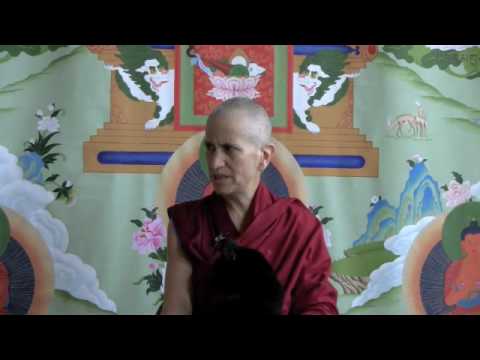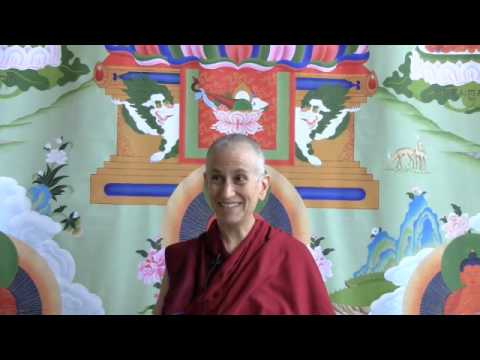Lamrim meditation in Tara sadhana
Part of a series of Bodhisattva's Breakfast Corner talks given during the Green Tara Winter Retreat from December 2009 to March 2010.
- The reason for doing the lamrim portion of the sadhana before the absorption of Tara
- What we do with Tara during the lamrim meditation
Green Tara Retreat 007: Lamrim meditation (download)
Someone wrote in a question, someone who’s doing the Retreat from Afar. They asked, “Why is the lamrim meditation before Tara absorbs into you, instead of afterwards, [in the sadhana]” and, “What do we do with Tara while we’re doing the lamrim meditation?” Let’s address the first question before figuring out what to do with Tara … “What do I do with you?” [jokingly]
The reason that the lamrim meditation is before the absorption, is because then Tara is on the crown of your head and so it’s like she is giving you inspiration and blessings when you meditate on the lamrim topic. It makes you feel like, “Oh, Tara’s there.” She is really inspiring your mind and opening your mind—making your mind more receptive. Then when you meditate on the lamrim topic, you really get some experience and feeling from it.
[Regarding the second question:] Tara just stays there. You don’t have to move her somewhere else; she’s quite happy on your head. You don’t pay attention to her so much because you’re paying attention to the lamrim topic. You’re just being aware that Tara’s there inspiring your mind. When Tara absorbs into you, since part of Tara’s nature is the understanding of that lamrim topic, you think Tara is absorbing into you, you will really feel that: “Oh, the real understanding and complete understanding of that topic is absorbing into my heart and is becoming unified with my own heart.”
So, you’re not thinking of Tara so much as some person who is out there. Rather, as just a representation of the realizations, the understandings, that you are trying to cultivate in your own practice—and that you will cultivate in order to become a Buddha.
I’m happy with questions like this because it shows that the person has really been doing the practice. If you’re not doing the practice, you wouldn’t have a question like this. So it’s quite good.
Venerable Thubten Chodron
Venerable Chodron emphasizes the practical application of Buddha’s teachings in our daily lives and is especially skilled at explaining them in ways easily understood and practiced by Westerners. She is well known for her warm, humorous, and lucid teachings. She was ordained as a Buddhist nun in 1977 by Kyabje Ling Rinpoche in Dharamsala, India, and in 1986 she received bhikshuni (full) ordination in Taiwan. Read her full bio.


